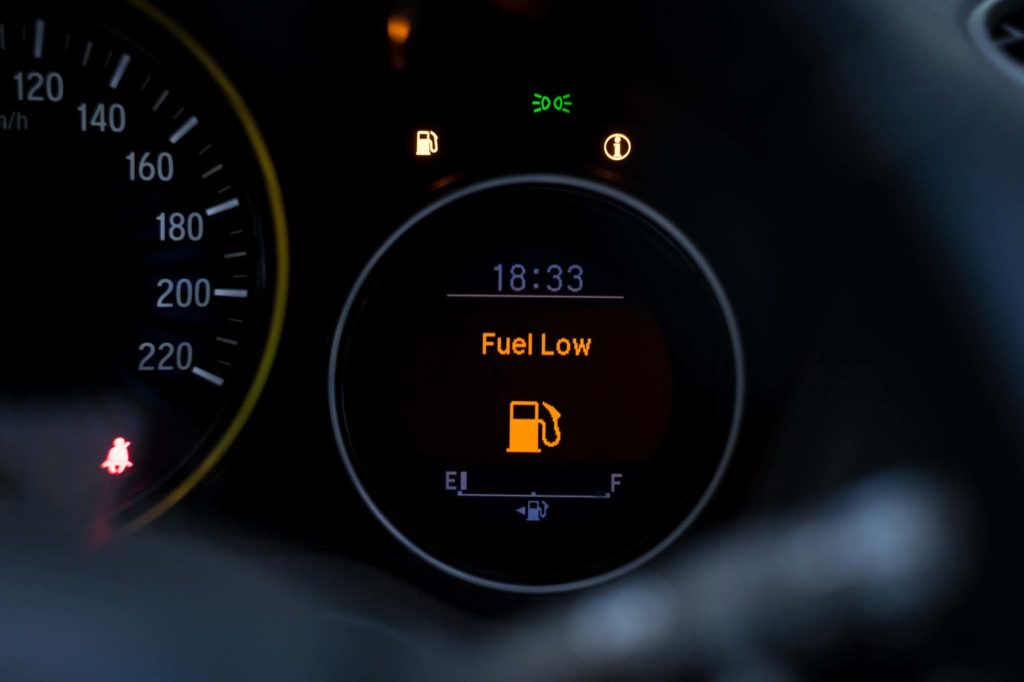With gas prices on the rise, it is understandable that you would want to do everything you can to reduce your consumption and improve gas mileage. You’ve probably heard of many ways to save gas–one of them involving A/C use. Some drivers say letting your A/C run while you drive wastes a lot of fuel. But is this true? Does running your A/C while you drive really waste gas?
Does Using Your A/C Waste Gas?
The A/C consumes fuel, but it doesn’t waste gas per se. The A/C system’s compressor is driven by the engine and, therefore, puts an additional load on the engine. Since fuel is needed to power your engine, the A/C system then indirectly consumes fuel. Additionally, if the engine is turned off, the A/C unit will not work–proof of its connection to the engine.

However, even though the operation of the A/C system adds a slight load to the engine, which then slightly increases its fuel consumption, it is hardly significant.
How Does the A/C Work?
An A/C system works by cycling refrigerant, turning it from a gaseous state into a liquid, and then back again. To change the refrigerant between a liquid and a gaseous state, the A/C system works to control pressure and temperature. By the end of this cycle, the refrigerant has turned into a cold gaseous state inside the evaporator, at which point outside air is blown over it, cooled, and then sent to the cabin.
Here are five essential parts of the A/C system you should know about:
- Compressor
The compressor compresses and distributes the refrigerant so that it can flow easily through a line to the condenser.
- Condenser
The condenser, which acts as a radiator, takes some of the heat out of the refrigerant, turns the refrigerant into a liquid, and pushes it through the expansion valve or orifice tube.
- Expansion valve or orifice tube
The expansion valve or orifice tube then reduces the temperature and pressure of the refrigerant while metering it into the evaporator.

Removes moisture and stores excess refrigerant.
- Evaporator
The evaporator then takes heat from the air passing through its core and transfers that to the refrigerant, leading to cold air flowing beyond the evaporator.
When one or more of these components go bad, repair or replacement is needed. That’s because the system won’t be able to function as it should if one or more of its parts are damaged.
Can You Save Gas By Driving Without A/C?
Yes, you do save a little bit of gas when you drive without running your A/C. However, there are exceptions where turning it off can waste more fuel, such as when you’re driving at highway speeds with the windows down.
The U.S. Environmental Protection Agency says that using your car’s A/C can be more efficient while driving at highway speeds than just leaving the windows open. Leaving the windows open can elevate aerodynamic drag, causing the engine to work harder, thus burning more fuel.
What Are Some Ways to Improve Fuel Economy?
There are plenty of ways to improve your fuel economy. We’ve listed down a few tips you should try out to save at the pump.

- Apply your brakes gradually
- Keep your tires properly inflated and aligned
- Avoid idling for more than 30 seconds
- Reduce your speed when driving
- Drive conservatively and avoid rapid acceleration and hard braking
- Use cruise control to minimize speed fluctuations
- Minimize cold engine operation
- Have your vehicle regularly serviced and maintained
Keep in mind that not all vehicles are the same, and some of these tips may not work for you. If your vehicle consumes more gas than usual, it might be a good idea to bring it to a certified mechanic to see if faulty parts cause poor fuel mileage.
Any information provided on this Website is for informational purposes only and is not intended to replace consultation with a professional mechanic. The accuracy and timeliness of the information may change from the time of publication.



















